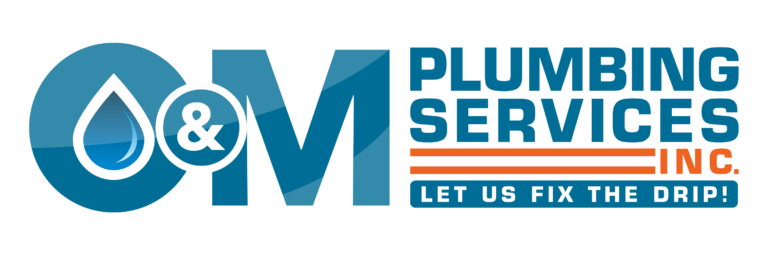
If your business uses gas for kitchen equipment, heating, or industrial processes, installing or upgrading commercial gas piping is a significant project. It’s not like running a short extension cord. Commercial gas work requires careful planning, code compliance, the right materials, and testing to keep employees, customers, and your building safe.
Knowing what to expect helps you budget, schedule, and avoid surprises. In this blog, we will look at the commercial gas pipe installation process. We will discuss everything from planning and permitting to choosing piping materials, sizing and layout, installing and testing, costs and timelines, maintenance, and picking the right contractor.
If you are in Austin or the surrounding areas and want a no-nonsense partner for commercial gas work, O & M Plumbing has experience handling these projects from small restaurants to larger commercial sites.
Pre-Project Planning & Permits
Commercial gas projects begin on paper. You will need clear scope documents that list every appliance and its BTU/pressure needs, a site plan showing the meter location and pipe routing, and permit applications filed with the city.
The local authorities and utility companies must be notified that many municipalities require permits and an inspector’s sign-off before gas is turned on. Skipping permits or thinking you can “do it later” will only delay your project and could create liability or insurance issues. Model fuel-gas codes set the technical rules that plumbers and inspectors follow.
What to expect: an initial site visit, a written estimate, permit submission, and a checklist of required documentation.
If you want help navigating permits and local requirements in Austin, O & M Plumbing handles permit paperwork and inspections so your project moves smoothly.
Choosing the Right Piping Material
Commercial jobs use different materials depending on location (indoor vs. underground), pressure, and specific code allowances.
Common choices for piping materials include:
- Black iron (steel): It is great for durability and strength, and has been used in commercial interiors for a long time.
- CSST (corrugated stainless steel tubing): It is flexible and often faster to install in tight areas, but must be installed according to manufacturer and code requirements (bonding, routing clearances).
- PE (polyethylene): It is used for underground running services, and in some jurisdictions for gas utilities.
Your choice of material will depend on the local code, the building layout, and the appliances you serve. National and model codes (IFGC / NFPA / ANSI guides) list allowable materials and important installation details that your contractor must follow.
Need guidance on the right material for your site? Call O & M Plumbing and let our experts evaluate your building and recommend materials that meet code and suit long-term performance.
Sizing and Layout
A proper commercial gas installation requires correct pipe sizing and layout so that appliances get the pressure and volume they need. Undersized piping causes poor appliance performance; oversized piping wastes money.
Sizing considers total BTU demand, length of run, number of fittings, and delivery pressure. The layout also needs safe, accessible shutoffs and routing that avoids electrical runs or sources of heat. Many jurisdictions require yellow identification and labeling of exposed piping.
Our team of trained professionals at O & M Plumbing will calculate load, propose routing that minimizes disruption, and pre-empt problem areas (like long runs or tight bends) so your equipment runs reliably.
Gas Pipe Installation Steps
A commercial gas pipe installation typically follows a sequence:
- Shutoff & isolation: This step is needed when modifying an existing system. A safety brief is needed.
- Rough piping: Run steel, CSST, or PE as planned; install supports and labels.
- Appliance connections: Stub outs and test connections to each unit.
- Pressure testing: The system is pressure-tested (usually with air or inert gas) to check for leaks.
- Inspections: Municipal or utility inspectors verify code compliance.
- Final connections & startup: Meters or service lines are brought live only after approvals.
Expect careful testing and a final inspection. Gas companies and inspectors won’t allow unsafe setups. Licensed contractors further follow the manufacturer’s installation and code procedures at every step.
If you prefer a contractor who sticks precisely to these steps and documents them for inspections, O & M Plumbing performs full commercial gas pipe installation with testing and inspector coordination.
Safety & Testing
Safety is the top priority. Proper installations include pressure testing, leak detection checks, correct shutoffs, and appropriately placed emergency valves. For commercial work, bonding and grounding requirements (especially with CSST) are crucial to minimize risk from lightning or electrical faults.
Technicians also verify venting, combustion air, and clearances around appliances. These details protect people and property. Model codes and manufacturer guides provide mandatory testing and bonding procedures.
O & M Plumbing documents every safety test and ensures systems comply before handing over the job, giving you peace of mind and a clear paper trail for gas pipe inspections and insurance.
Timelines & Typical Costs
Commercial gas projects vary widely in time and cost. A small, single-appliance run might take a day; a larger multi-appliance kitchen or tenant-improvement project can take several days to weeks, depending on permitting, inspections, and how much trenching or coordination with other trades is required.
Permit fees, required gas-company coordination, and special fittings (e.g., commercial meter upgrades) affect timing and price. Getting a clear scope and estimate up front reduces surprises.
O & M Plumbing provides straightforward estimates for commercial gas pipe installations, including permit handling, so you can accurately plan your project timeline and budget.
Working Around Business Operations
For restaurants, laundromats, and other commercial sites, downtime costs real money. Good installers plan around business hours and stage work to reduce interruptions. Options include night or weekend installs, phased work that keeps essential appliances online, or temporary solutions during the swap-over. Clear communication and a coordinated schedule are critical to minimizing service disruptions.
If scheduling around business operations is critical, O & M Plumbing will work with you to stage the gas pipe installation at times that minimize operational impact.
Long-Term Service & Maintenance
A gas piping system isn’t “set and forget.” Regular inspections, leak checks, and preventive maintenance keep pipes and appliance connections safe and reliable. For commercial properties, consider a maintenance contract that includes scheduled checks, rapid response for leaks, and periodic re-testing after major events or renovations.
O & M Plumbing offers gas pipe maintenance and emergency response plans tailored for commercial clients to keep your gas system healthy and code-compliant over time.
How to Choose the Right Contractor
Hire a licensed contractor who is experienced with commercial gas systems and comfortable with permits and inspections. Verify references from similar projects, ask about insurance and bonding, and check that the team follows local codes and manufacturer instructions. A good contractor communicates clearly about schedule, safety, and testing documentation.
At O & M Plumbing, we have local commercial experience in Austin and the surrounding areas. Our trained professionals are experts at managing projects from planning to final inspection, making us a solid option for commercial gas installation.
Commercial gas pipe installations are technical projects that demand respect for code, safety procedures, and careful coordination. Every step matters, from pre-project planning and correct material selection to pressure testing and business-friendly scheduling. When you plan well and hire experienced commercial plumbers, you reduce risk, control costs, and get reliable gas pipe service for your business operations.
If your business in Austin or the surrounding areas is planning a gas pipe install or needs an upgrade, O & M Plumbing offers commercial gas piping expertise, permit handling, testing, and maintenance to keep your facility safe and compliant. Contact O & M Plumbing today for a clear proposal and professional installation you can trust.
Get started with O & M Plumbing’s Commercial Gas Pipe Installation services. Call us and get a FREE consultation.

